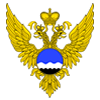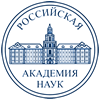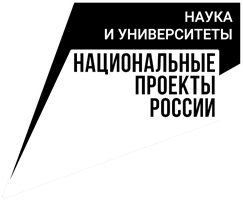48th meeting of the seminar
«Supercomputer simulation of the Earth system»
The seminar is devoted to various aspects of the application of supercomputer modeling methods for solving weather and climate forecasting problems.
Seminar co-organized organizations
 |
Lomonosov Moscow State University (MSU) |
 |
Federal Service for Hydrometeorology and Environmental Monitoring of Russia |
 |
Russian Academy of Sciences |
Seminar Leader:
 |
V.A. Sadovnichy academician, rector of Lomonosov Moscow State University |
Co-leaders of the seminar:
 |
R.M. Wilfand Doctor of Technical Sciences, Scientific Director of the Hydrometeorological Center of Russia |
 |
S.A. Dobrolubov Corr. RAS, Dean of the Faculty of Geography, Lomonosov Moscow State University |
 |
N.G. Yakovlev Doctor of Physics and Mathematics, Leading Researcher, Institute of Numerical Mathematics, RAS |
 |
V.M. Stepanenko Doctor of Physics and Mathematics, Deputy Director of RCC MSU |
Scientific Secretary of the seminar:
 |
M.I. Varentsov Ph.D., senior researcher of RCC MSU |
Seminar topics cover the following main areas (but not limited to them):
- Methods and technologies for using supercomputer computing in interdisciplinary problems of environmental sciences.
- Mathematical modeling of processes in the climate system.
- Application of supercomputer technologies to solve problems of weather forecasting.
- Application of supercomputer technologies to solve problems of assessing climate change and their consequences for the environment.
- Application of supercomputer technologies for the complex solution of problems of environmental protection, including natural hazards and man-made disasters.
PROGRAM
17:30 (GMT+3)
| M.A. Tolstykh | |
| R.Yu. Fadeev | |
| V.V. Shashkin | |
| S.V. Travova | |
| R.B. Zaripov | |
| G.S. Goiman | |
| K.A. Alipova | |
| V.G. Mizyak | |
| V.S. Rogutov |
DEVELOPMENT OF A MEDIUM-TERM AND LONG-TERM FORECAST SYSTEM BASED ON THE SLAV MODEL
In recent years, a seamless forecasting system based on the SLAV atmosphere model [1] has been developed both in the field of computational algorithms and their implementation, and in the field of describing subgrid-scale processes [2]. On this basis, three new configurations of the forecast system have been developed.
- A new version of the SLAV10 model for medium-range forecasting has begun operational testing, with a horizontal resolution of about 10 km in the Northern Hemisphere, 104 vertical levels, which corresponds to today's average world level.
- A new ensemble medium-range weather forecast system has been tested and implemented.
- A new system of sub-seasonal and seasonal forecasts has been developed and tested since the beginning of 2022 at the Hydrometeorological Center of Russia. The system includes an initial ensemble generator based on LETKF and a SLAV model with a horizontal resolution of 0.9x0.72 degrees, 96 vertical levels. The model includes a representation of its uncertainty using the SPP and SPPT techniques. The simplified extended Kalman filter is used to initialize the multilayer soil model of INM RAS – MSU [3].
The report will present the results for all the above configurations, as well as the work that contributed to the acceleration of the software package of the model by 4 (four) times.
References:
- M.A. Tolstykh [et al.] Atmospheric modeling system for seamless forecasting. 2017 M.: Triada ltd.-166 p.
- R.Yu. Fadeev [et al] Glacier parameterization in SLAV numerical weather prediction model//Rus. J. Num. an. Math. Mod. 2022 V37 N4, P.189-201.
- S.V. Travova [and others] Assimilation of surface observation data for soil moisture analysis of the multilayer model of the active land layer of the INM RAS–MGU as part of the PLAV global atmospheric modeling system//Meteorology and Hydrology 2022 N8. P.80-100.
The meeting of the seminar will be held in the form of a webinar on the Zoom platform.
Link to the conference:
https://us02web.zoom.us/j/89313676503?pwd=eGtYdm54TGJra1E0SHJ0RmVpNFFTQT09
Meeting ID: 893 1367 6503
Passcode: 465184
To simplify our work during the seminar, please do the following: check in advance that Zoom works for you (in the Zoom application settings you can check the quality of the speakers and microphone) and enter your last name, first name in your profile settings and middle name in full (this can be done on your profile page (https://us02web.zoom.us/profile) - in this case, conference colleagues will see how to contact you.

